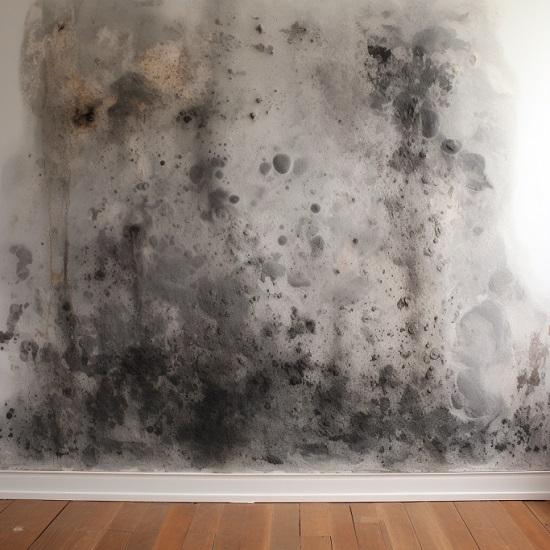Guaranteeing Post Remediation Verification Accuracy
Guaranteeing Post Remediation Verification Accuracy
Blog Article
Your Ultimate Guide to Blog Post Mold And Mildew Removal Techniques
Browsing the world of post-mold removal strategies is a precise procedure that demands attention to information and a thorough understanding of the ins and outs included. In the after-effects of mold problem, understanding exactly how to effectively get rid of the mold and mildew and prevent its reoccurrence is extremely important for keeping a healthy interior atmosphere. From selecting the appropriate cleansing and disinfecting approaches to executing strategies for lasting mold avoidance, each step in the removal journey plays a crucial function in guaranteeing an effective outcome. As we get started on this exploration of post-mold removal techniques, we will certainly uncover the crucial strategies and ideal practices that can aid you restore your area to its pre-mold problem and protect it versus future mold dangers.
Recognizing Post-Mold Removal Process
After completing the mold removal procedure, it is critical to recognize the post-mold removal strategies that are needed to make sure a detailed and reliable clean-up. Once the mold and mildew has actually been gotten rid of, the next step entails cleansing and sanitizing the impacted areas to prevent any kind of regrowth of mold and mildew. This includes making use of specialized cleansing agents to wipe down surface areas and eliminate any remaining mold and mildew spores. It is necessary to dry the area entirely to prevent the growth of mold and mildew in the future (Post Mold Remediation Report). Proper air flow and dehumidification can help in this procedure.
In addition, carrying out a last evaluation post-remediation is crucial to ensure that all mold has actually been successfully removed. This inspection ought to entail an extensive aesthetic check as well as potentially air tasting to validate the absence of mold spores in the air. Extra removal might be necessary if the evaluation exposes any type of sticking around mold and mildew. Lastly, educating residents on safety nets such as regulating dampness degrees and promptly addressing any water leaks can help maintain a mold-free environment.
Reliable Cleansing and Sanitizing Methods

Preventing Future Mold And Mildew Development

Importance of Correct Ventilation
Correct ventilation plays a critical duty in avoiding dampness accumulation, moved here a vital consider mold development within interior atmospheres. Reliable ventilation systems aid eliminate excess moisture from the air, decreasing the opportunities of mold spores discovering the moisture they need to sprout and spread. Without sufficient air flow, indoor areas can come to be a breeding ground for mold and mildew, bring about prospective wellness risks and architectural damages.
By guaranteeing correct air circulation, ventilation systems can additionally help in drying out moist locations quicker after water damages or flooding incidents, additionally hindering mold growth. Post Remediation verification. In areas like washrooms, cooking areas, attic rooms, and basements where wetness degrees tend to be greater, installing and maintaining effective ventilation systems is essential in stopping mold invasions

Monitoring and Upkeep Tips
Given the crucial function that appropriate ventilation plays in avoiding mold growth, it is crucial to develop reliable tracking and upkeep ideas to make sure the continued performance of ventilation systems. Monitoring humidity levels within the property is also crucial, as high moisture can add to mold and mildew growth. By staying conscientious and aggressive to the problem of ventilation systems, home owners can effectively minimize the threat of mold regrowth and maintain a healthy and balanced interior atmosphere.
Conclusion
In final thought, post-mold remediation techniques are important for ensuring a tidy and secure atmosphere. Comprehending the procedure, carrying out efficient cleansing and sanitizing methods, protecting against future mold and mildew growth, preserving proper air flow, and regular surveillance are all important check that steps in the removal process. By adhering to these guidelines, you can efficiently get rid of mold and mildew and avoid its return, working or advertising a healthy living area for all occupants.
In the after-effects of mold invasion, knowing exactly how to properly eliminate the mold and mildew and prevent its reoccurrence is vital for maintaining a healthy interior environment. When the mold and mildew has been eliminated, the following step includes cleansing and disinfecting the impacted locations to prevent any type of regrowth of mold and mildew - Post Mold Remediation. After eliminating noticeable mold and mildew development, it is essential to clean up all surface areas in the damaged location to eliminate any staying mold spores. To additionally boost mold and mildew prevention measures, it is vital to attend to underlying concerns that originally led to mold and mildew development.Given the crucial duty that proper ventilation plays in avoiding mold growth, it is crucial to develop efficient surveillance and upkeep suggestions to guarantee the ongoing functionality of air flow systems
Report this page